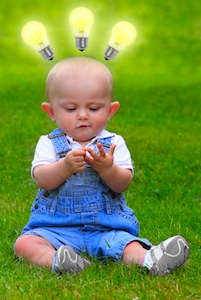“You can’t separate intellect and feelings in the work of the mind. They’re both there all the time. Real learning—attentive real learning, deep learning—is playful and frustrating and joyful and discouraging and exciting and sociable and private all at the same time, which is what makes it great.” ~ Eleanor Duckworth
Know when to memorize. Know when to mesmerize!
If we want students to learn deeply and efficiently we need to understand the role emotions play in different types of learning. We could spend much time discussing what it means to learn. In fact, Seymour Sarason has a whole book called “And What Do You Mean by Learning?”
Without getting into it too deeply, we could probably agree that we want students to acquire some knowledge, skills and attitudes. So how should kids ‘get that knowledge’? A constructivist approach would suggest that kids need to assimilate information into existing schema or indeed construct new schema to accommodate new information and ideas. Lev Vygotsky might add that this happens best in a social setting.
Should Students Memorize Content?
 Other approaches would involve getting students to memorize content or procedural knowledge. While I believe there are times when this is quite appropriate, rote memorization continues to be an overused strategy that is often implemented without a deep understanding of its nuances. It becomes “memorization of decontextualized facts” rather than “active construction of new schema.”
Other approaches would involve getting students to memorize content or procedural knowledge. While I believe there are times when this is quite appropriate, rote memorization continues to be an overused strategy that is often implemented without a deep understanding of its nuances. It becomes “memorization of decontextualized facts” rather than “active construction of new schema.”
These days, there is a very vocal anti-memorization movement! We hear about collaboration, project-based learning, student agency, constructionism, and passion. All of which I support. I’ve been a fan of passion-based learning since I started teaching in 1970. Somehow it just seemed a matter of ethics and the culture of the day. Kids should love learning and love school. It was after all, the “love, peace and happiness” era.
Passion Constitutes More than Engagement
Passion-based learning has gained more ground recently. Why? Apart from the anti-memorization sentiments, the main rationale seems to be focused on engagement and motivation. Students are more likely to learn if they are captivated, motivated and engaged with the curriculum or projects in hand. We could unpack types and levels of engagement, but I’m sure we’d all agree on this: if the child is deeply engaged in a task there is greater likelihood that she will attend to it better and build requisite understandings and new schema that serve to increase the base of content and process knowledge desired.
But passion isn’t just about the motivational aspect. It’s deeper than engagement.
There are cognitive processes in the brain that are “turned on” by emotion – be that passion, anger, anxiety or other emotions.
 Emotions Impact Cognition
Emotions Impact Cognition
Here’s a sampling of thoughts from some great voices:
Eleanor Duckworth suggests that “…you can’t separate intellect and feelings in the work of the mind. They’re both there all the time. Real learning—attentive real learning, deep learning—is playful and frustrating and joyful and discouraging and exciting and sociable and private all at the same time, which is what makes it great” (in Teaching by Heart: The Foxfire Interviews, Sara Day Hatton, 2005, p. 21).
Paulo Freire, the great Brazilian educator, often suggested that we must teach with both our hearts and our minds, while Lev Vygotsky recognized the limitations of trying to explain ‘superior thinking processes’ without addressing the effects of emotion.
Nellie J. Zambrana-Ortiz in Pedagogy in (E)Motion suggests that “emotions color our ideas, move the reason, and stretch cognition.” She says, “Emotions are related to body as well as mind. There is no cognition without emotions, or emotions outside the limits of a cognitive experience, and progressive explanations of human learning and development must take into consideration the fusion of both.”
It’s real now that “science” says so
Why is it not a widely accepted fact that emotions impact cognition and why is it not central to our educational systems? My guess is that all the psychologists, philosophers and educators who have spoken about the centrality of emotions in learning haven’t been considered ‘real scientists’ by our western societies. We tend to like ‘hard’ science.
Well, now we are getting some ‘hard science’ as a result of breakthroughs in neuroscience research.
Antonio Damasio, a great neuroscientist, has researched this phenomenon extensively in recent years and has discovered that emotions are absolutely necessary in the decision-making process. He describes them as the “engine of the limbic system” – our “emotional brain.”
Priscilla Vail in her article “The Role of Emotions in Learning,” says ‘Emotion is an on/off switch for learning…the emotional brain, the limbic system, has the power to open or close access to learning, memory, and the ability to make connections.’
When students are passionately engaged in their learning – when they are mesmerized by their learning environment or activities – there are myriad responses in their brains making connections and building schema that simply would not occur without that passion or emotion.
 Much of what we ask kids to “memorize” has little emotional charge to it. Emotions can significantly alter the creation and recall of memories. People are better at remembering information that is emotionally charged – rather than information that is neutral or flat.
Much of what we ask kids to “memorize” has little emotional charge to it. Emotions can significantly alter the creation and recall of memories. People are better at remembering information that is emotionally charged – rather than information that is neutral or flat.
So when you are designing learning environments, remember thatmesmerization trumps memorization!